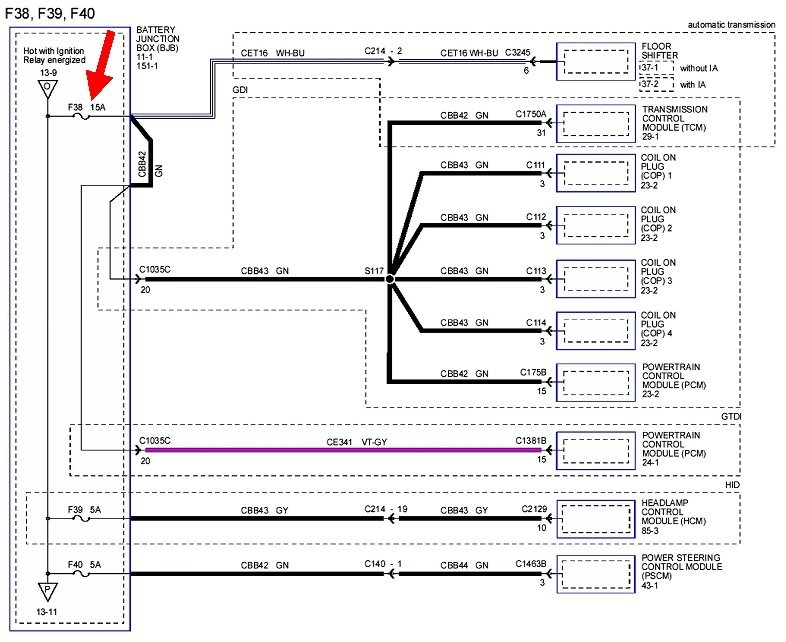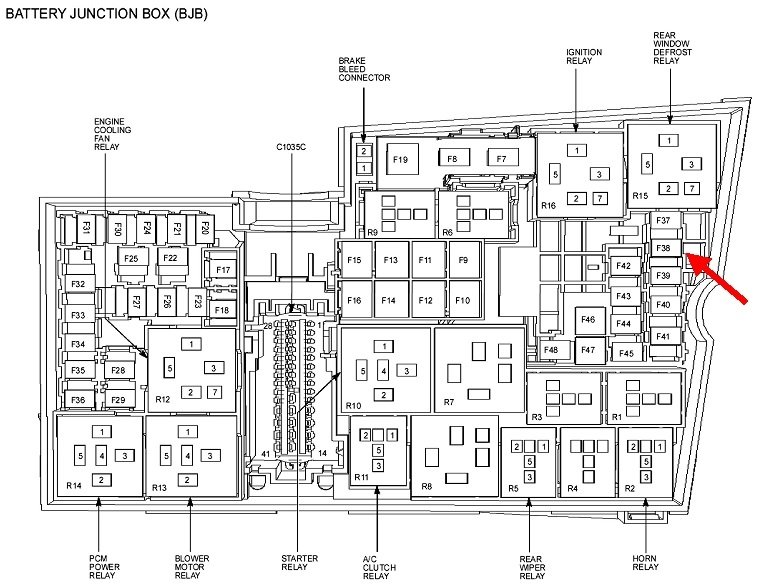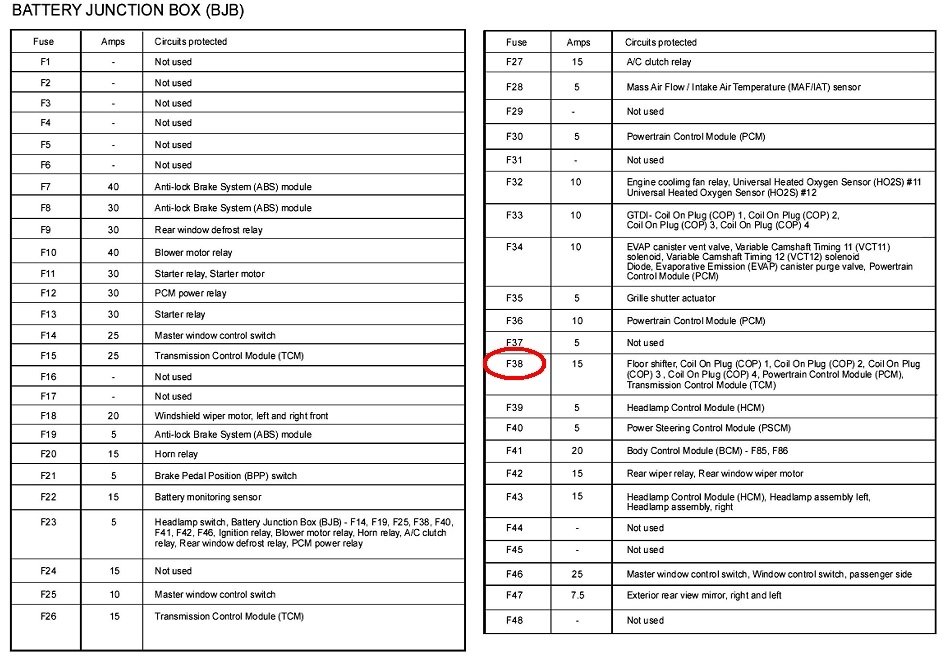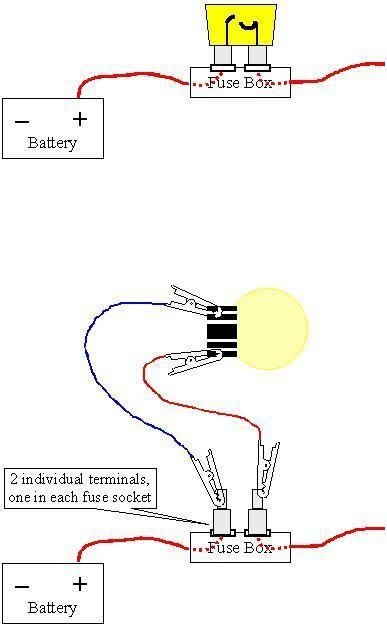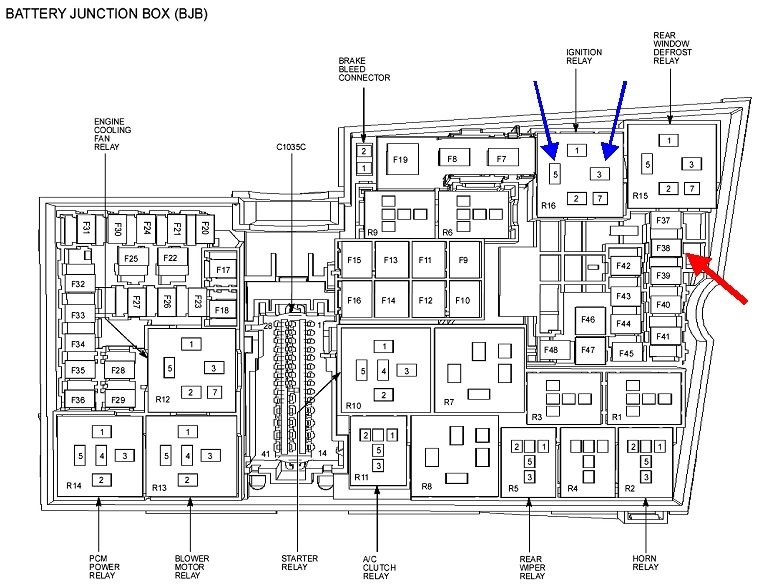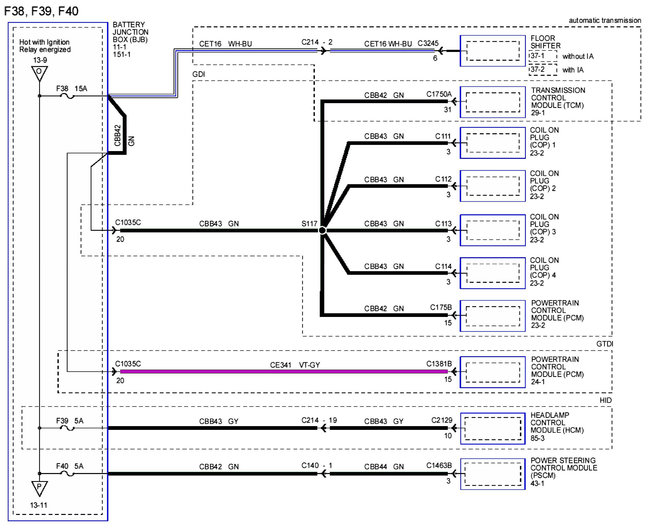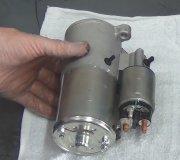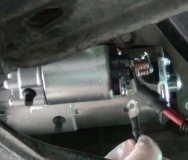There's also a fuse 38 in the Rear Junction Box, but that one is listed as "not used".
A simple trick to finding a short is to replace the blown fuse with a pair of spade terminals (for spade-type fuses), then use small jumper wires to connect them to a 12 volt light bulb. A brake light bulb works well. When the circuit is live and the short is present, the bulb will be full brightness and hot so be sure it's not laying on the carpet or against a plastic door panel. Now you can unplug electrical connectors and move things around to see what makes the short go away. When it does, the bulb will get dim or go out.
To add to the misery, you'll see at the top of the first diagram, 12 volts comes from the Ignition Relay. On some car models that relay only turns on for one second, then again when the engine is cranking or running. It is not practical to have a helper cranking the engine while you do the testing, and one second is obviously not enough time. If you find the 12 volts goes away shortly after you turn on the ignition switch, you can bypass the ignition relay instead with the light bulb, but you'll have to install a good fuse 38.
Insert the two spade terminals into the ignition relay's socket, terminals 3 and 5 as pointed out with the blue arrows in the fifth drawing. With this method, the ignition switch doesn't even have to be turned on. The rest of the procedure is the same, and it will save you from blowing dozens of fuses.
Images (Click to make bigger)
Thursday, January 9th, 2020 AT 2:06 PM
